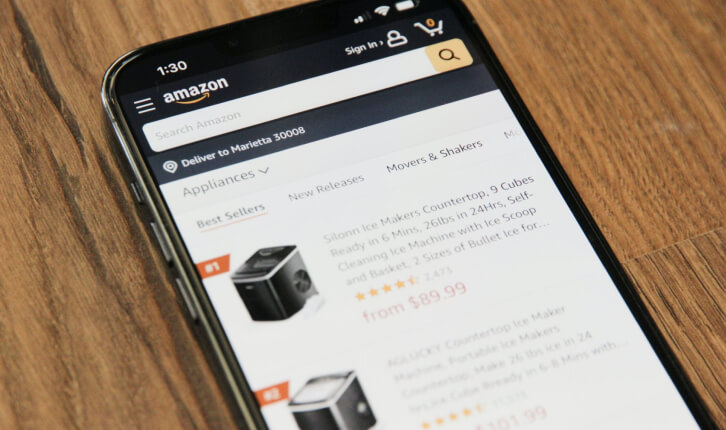Published on: October 14, 2022 | Last updated on: July 22, 2024 |
As an e-commerce company, you may find yourself struggling if your pricing isn’t well thought through.
After all, success when operating on the digital shelf means you should already be competitively priced and ready to go.
We appreciate it’s sometimes easier said than done, though. You’ll first need to consider different pricing policies and decide which one is best for your business.
In this article, we look at the debate around MSRP vs MAP pricing and provide a clearer picture of what these two pricing models can offer.

MSRP stands for ‘manufacturer’s suggested retail price’, whilst MAP pricing stands for ‘minimum advertised price’.
By law, manufacturers can’t technically give an amount at which to price your products. Instead, they make a suggestion (MSRP) and sometimes also agree on a minimum advertised price (MAP).
Across the globe, countries use MSRP and MAP pricing policies to stay competitive within their markets. However, some regions – such as the EU and UK – do not permit MAP pricing on the grounds that it breaches their competition laws.
It’s important to understand that selling price and MSRP can be the same, but they often vary. There’s a very good reason for this.
Imagine a product displayed on your digital shelf. If it has an MSRP of $20 and you go on to sell it for that amount, the selling price and MSRP will be the same.
However, profits usually come from the markups companies put on their products. Say you sell the same product but mark it up by 20% over MSRP, the MSRP will still be $20, but the product now has a selling price of $24.
MSRP does not include tax or any other costs associated with the purchase of a particular product.
It’s your responsibility as a business owner to ensure that VAT, sales taxes and additional charges are accounted for during the customer’s purchasing journey.
Wondering where you stand on the whole MAP pricing vs MSRP debate? Start by asking yourself the following questions:
Listing the MSRP price of your products when retailers sell them for the same amount or less ensures customer satisfaction at the time of purchase.
With the MSRP recommendation as a reference point, shoppers know they’re getting a good (or better) deal.
As alluded to earlier, MAP pricing is perfectly legal in some countries, like the US; however, in the UK and the EU especially, it’s best avoided. Otherwise, your business could suffer severe penalties.
In the UK, MSRP is referred to as the recommended retail price (RRP). RRPs are fine, providing that retailers still have the option to trade at whatever price they want.
Unfortunately, even with proper implementation, there are no legal grounds for enforcing MSRP or MAP pricing.
However, there are certain MAP enforcement steps you can take at a business level, such as withdrawing perks from offending retailers, revoking their authorisation status and, crucially, preventing them from buying your products again.
Price and quality go hand in hand for most shoppers, and if your products are priced below their MSRP, this could make them lose value.
Implementing an effective strategy based on MSRP will help maintain a positive brand image while protecting manufacturer profit margins as well as your own.
Establishing MAP pricing and MSRP policies creates a two-pronged defence against those who might undercut your sales online.
Both MAP and MSRP have their benefits, but together they provide greater protection for your brand, helping to generate more consistent, profitable growth.
With Magpie DBX, price tracking couldn’t be simpler. It offers a one-stop shop for 24/7 reporting on both your own products and those of your competitors, as well as providing searchable, filterable results.
You can even see price trends over time and get alerts when prices change, ensuring your business remains competitive.
Think Magpie could help you decide between MAP pricing vs MSRP? Get in touch with us and request a demo today!

Pricing your products competitively while securing a healthy profit margin is the ambition of every business. With customers now more tech-savvy and commercially aware than ever, competitor price monitoring is essential.
But how exactly do you stay ahead of your competition and keep prices consistent?
In this article, we’ll show you 10 ways to beat competitors without changing your prices, and explain what Magpie DBX can do to help your company maintain its pricing position.

As an e-commerce business, you’re going to encounter pricing violations at some point.
The digital shelf is vast, and unfortunately some sellers don’t always play by the rules. If the opportunity to undercut your pricing arises, they will take full advantage.
Of course, most online merchants are perfectly compliant with the original requirements of their partners’ terms. However, even just one bad apple could spoil your reputation (and profits).
This article provides you with info on how to deal with pricing violations, so that your company isn’t seriously impacted if and when they occur.

If you run a business, you will have competitors.
And just like you, your competitors are working hard to make their business the best.
Some things will work for them, and some things won’t. They may have already solved problems that you’re currently facing, or maybe they’re gearing up for a big product launch.
But if you’re not keeping a close eye on them, how would you know all this?
In this article, we break down why it’s important to monitor competitors, including how one of our partners solved a crucial problem by monitoring their competition.
Want to learn more about how Magpie DBX can help your business? Get in touch with us and let us show you!



